
Denmark and the former political union of Denmark–Norway had a colonial empire from the 17th through the 20th centuries, large portions of which were found in the Americas. Denmark and Norway in one form or another also maintained land claims in Greenland since the 13th century.

Nuuk is the capital and largest city of Greenland. Nuuk is the seat of government and the country's largest cultural and economic centre. The major cities from other countries closest to the capital are Iqaluit and St. John's in Canada and Reykjavík in Iceland. Nuuk contains almost a third of Greenland's population and its tallest building. Nuuk is also the seat of government for the Sermersooq municipality. In January 2020, it had a population of 18,326.
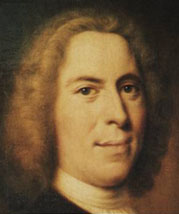
Nikolaus Ludwig, Reichsgraf von Zinzendorf und Pottendorf was a German religious and social reformer, bishop of the Moravian Church, founder of the Herrnhuter Brüdergemeine, Christian mission pioneer and a major figure of 18th century Protestantism.

The University of Greenland is Greenland's only university. It is in the capital city of Nuuk. Most courses are taught in Danish, a few in Greenlandic and classes by exchange lecturers often in English.

Hans Poulsen Egede was a Dano-Norwegian Lutheran missionary who launched mission efforts to Greenland, which led him to be styled the Apostle of Greenland. He established a successful mission among the Inuit and is credited with revitalizing Dano-Norwegian interest in the island after contact had been broken for hundreds of years. He founded Greenland's capital Godthåb, now known as Nuuk.

The Moravian Church, or the Moravian Brethren, formally called the Unitas Fratrum, known in German as the [Herrnhuter] Brüdergemeine [sic], is one of the oldest Protestant denominations in the world, dating back to the Bohemian Reformation of the 15th century and the Unity of the Brethren founded in the Kingdom of Bohemia.

Paul or Poul Hansen Egede was a Dano-Norwegian theologian, missionary, and scholar who was principally concerned with the Lutheran mission among the Kalaallit people in Greenland that had been established by his father, Hans, in 1721.
Jens Haven was a Danish-Canadian Moravian missionary and the prime mover behind the founding of the Moravian missions in Labrador.

Qeqertarsuatsiaat, formerly Fiskernæs or Fiskenæsset, is a settlement in the Sermersooq municipality in southwestern Greenland, located on an island off the shores of Labrador Sea. Its population was 169 in 2020.
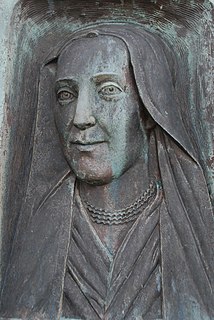
Gertrud Rask was the first wife of the Danish-Norwegian missionary to Greenland Hans Egede and was the mother of the missionary and translator Paul Egede.
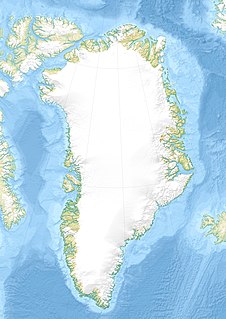
Nuup Kangerlua is a 160 km (99.4 mi) long fjord in the Sermersooq municipality in southwestern Greenland. It was formerly known by its colonial name as Godthaab Fjord, Gilbert Sound and Baal's River.

Moravian Brethren Mission House or Herrnhut House is a historical building in Nuuk, the capital of Greenland, established in 1747 from timber shipped to the United Brethren from the Netherlands. It was the centre of the Moravian Brethren Mission in Greenland and the missionaries operated across the west coast of Greenland from this building. Greenlander converts were reported saying, "If it can be so beautiful here on Earth, how wonderful must it not be in Heaven."

Qernertunnguit is a neighborhood of Nuuk, the capital of Greenland. It is part of the Quassussuup Tungaa district, located in the northwestern part of the town, facing the Nuup Kangerlua fjord.

Quassussuup Tungaa is a district of Nuuk, the capital of Greenland. Together with the Qernertunnguit neighborhood, it is located in the northwestern part of the town, facing the Nuup Kangerlua fjord.

Akunnat is a former community in southern Greenland on the island of Akonemiok or Qeqertarsuatsiaat, 3 miles (4.8 km) from the trading post of Fisher's Inlet.
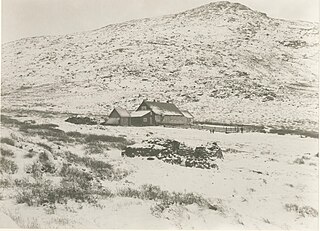
Umanak was a former Moravian mission in mid-western Greenland, located upfjord from Neu-Herrnhut.

Alluitsoq, formerly spelled Agdluitsok, is a former settlement in southern Greenland, located on the Alluitsoq or Lichtenau Fjord near Cape Farewell. It is about 13 kilometers from Ammassivik (Sletten), located on the opposite side of the same fjord.

The Moravian missions in Greenland were established by the Moravian Church or United Brethren and operated between 1733 and 1900. They were operated under the auspices of the Royal Danish College of Missions until its dissolution in 1859 and were finally surrendered to the Lutheran Church of Denmark in 1900. Missionaries were allocated to the region and sometimes even sent wives who had been chosen for them and approved by the drawing of lots, a form of Cleromancy.
Matthäus Stach was a Moravian missionary in Greenland.
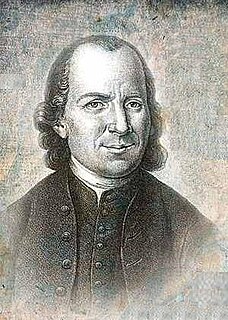
Christian David (1692–1751) was a German Lutheran missionary, writer and hymnwriter. He traveleled as a missionary of the Herrnhuter Brüdergemeine, the Moravian Church, to Greenland and to Native Americans. He is known as the author of hymn stanzaas that were included in "Sonne der Gerechtigkeit" in 1932.




















